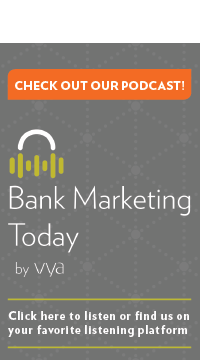 Did the pandemic reveal areas within your organization that were, or are, in need of restructuring in order to build greater resilience or to develop capacity for future growth? If so, you most certainly are not alone. According to a report from Gartner titled, The Future of Marketing Organizations: Rethink Marketing’s Organizational Structures and Responsibilities, the recent period of disruption has influenced CMOs to centralize their marketing organizations to alleviate operational problems and grow their teams.
Did the pandemic reveal areas within your organization that were, or are, in need of restructuring in order to build greater resilience or to develop capacity for future growth? If so, you most certainly are not alone. According to a report from Gartner titled, The Future of Marketing Organizations: Rethink Marketing’s Organizational Structures and Responsibilities, the recent period of disruption has influenced CMOs to centralize their marketing organizations to alleviate operational problems and grow their teams.
In a discussion on Gartner’s #Hashtags podcast, the survey designer and author of the report, Senior Director Analyst Sally Witzky explained, “This survey was interesting because they [CMOs] really did change everything. Every rock that was there, they overturned it – all in the vein of growth. How do we position ourselves for the future? They basically survived the pandemic, but they don’t ever want to have to do that again, so they are going to fix their organizations in a way that they can adapt to change at a much faster pace.”
One of the ways CMOs are tackling organizational change is by accelerating the shift to centralized marketing. The study revealed 60% of marketing organizations have centralized some or all of the marketing function in the quest for operational efficiency. And the pace of centralization has quickened, with 37% of organizations reporting they are now fully centralized (compared with 22% 12 months ago), and 23% are mostly centralized.
Why Centralize Marketing? And Why Now?
The top motivations CMOs cited for making changes to their organizational structures were prioritization, workflows, collaboration, greater control, economies of scale, and the desire to align marketing to overall business goals, growth and innovation. Another goal of centralization cited by CMOs was to increase executive-level influence, including CEO, CFO, CIO or CDO, so that marketing doesn’t have to work so hard to prove its value to the business.
Centralization also helps reduce or eliminate decentralized areas for waste, inefficiencies, duplication and individuals or small teams who work in silos. According to Witzky, when determining how to centralize the marketing function, there are many complexities that must be dealt with, as you work to balance the desire to give local markets autonomy while overcoming the inefficiencies and costs of retaining duplicate agencies, systems, data sets, etc.
These complexities are compounded in industries like financial services and franchising, where a growing number of companies are merging or bringing diverse brands under a single organization. In these multi-brand organizations, the ability of the marketing department to scale is crucial. Also, it’s important to be able to have a view across the wider multi-brand organization to spot trends, take advantage of opportunities for efficiencies and track activity.
During the #Hashtags podcast, Witzky explained, “Marketing ops should be centralized because…they’re driving for consistency. The more consistency that you can build in and still give people flexibility and adaptability to the market, the better it is. But that does require a system, …a really good system, to allow that kind of flexibility. And that’s why I think CMOs are also investing more in marketing ops.”
Marketing Resource Management in the Era of Centralization
A marketing resource management system, also referred to as a marketing portal, is the key foundational technology for a centralized marketing operation. At the most basic level, a marketing resource management system is a digital platform that enables you to house and manage all of your marketing materials in one place. It supports centralization by giving you total control over your brand, while also enabling local markets to customize messaging and design elements to resonate more deeply with their local customers.
As with any structural change within an organization, there can be downsides to centralization, such as losing touch with local markets, or reducing the ability to respond quickly to local market opportunities. The good news is that a full-featured marketing portal can enable centralized controls, like brand consistency and budget management, while still empowering your frontlines to resonate with local consumers, and your business can respond quickly to local market events.
What to Look for in a Marketing Resource Management Solution
Today’s marketing portals have a wide range of capabilities. Those that are best suited to support the centralization of marketing operations have features like:
Creative Requests Management.
Increases efficiency, local relevance and brand consistency by centralizing the management of creative requests from the field. Allows local staff to request changes to existing materials or request new materials through the portal. Corporate staff can manage, review and provide requested materials within the system.-
Forms/Request Management.
Like Creative Requests Management, the centralized management of forms and other requests increases efficiency and accuracy related to reimbursements, sponsorships, and more. Forms are set up in the system which, when completed by local staff, are routed for efficient approval and processing. -
User and Location Profile Management.
A system that captures and centrally manages user and location profile data enables auto-customization of templated assets with details like hours of operation and product pricing. This saves time and increases accuracy with auto-customized materials and campaigns. -
Approval Workflows.
Customized materials and requests can be automatically routed through workflows for appropriate review, approval, and tracking. This ensures brand consistency and the quality of marketing materials. -
Budget Management.
Centralized budget management simplifies the process of assigning, tracking, reviewing and approving budgets and co-op funds. It enables corporate to distribute funds to users and transfer funds as necessary. -
Integrations.
Integrating marketing systems and marketing service providers creates a centralized one-stop system for marketing. A centralized marketing system infrastructure provides a clear picture of marketing activity across channels. It also increases usage and compliance by local staff because corporate-provided and approved resources can easily be found, all in one convenient place.
Conclusion
We are living in a time when the capacity for operational efficiency and flexibility is paramount.
For marketing organizations looking for ways to address their expanding role, shifting to a centralized marketing operation, grounded by a full-featured marketing resource management system, could be the right decision. The ability to centralize control while still empowering frontlines to effectively engage local consumers will enable marketing to effectively align with overall business goals, growth and innovation.
Tags: marketing process optimization, brand consistency, MRM, marketing technology, Insurance Marketing, marketing resource management, marketing operations, financial services marketing, agile marketing, scale local marketing, marketing staff, marketing technology buyers’ resources, franchise marketing, multi-brand marketing




